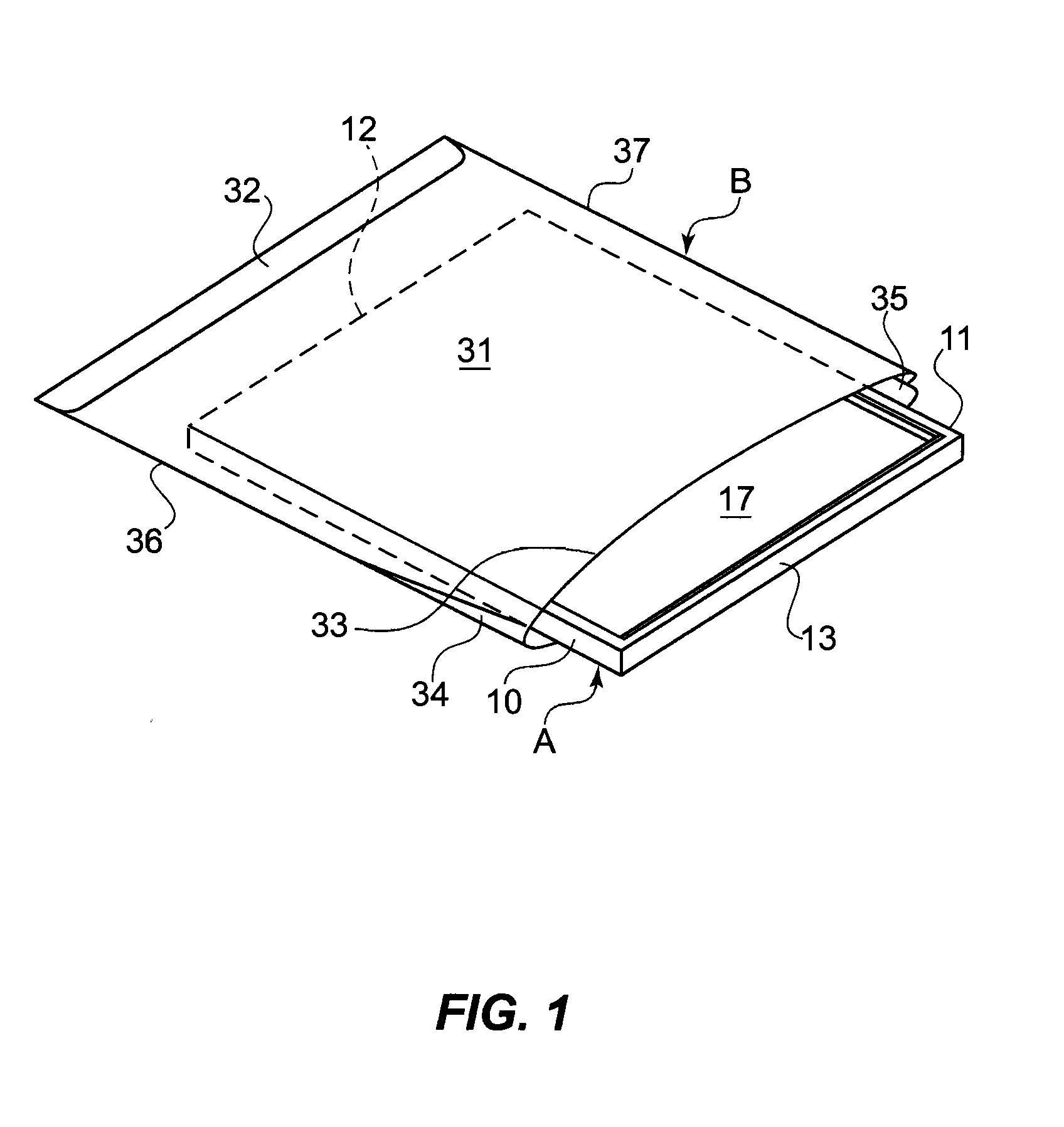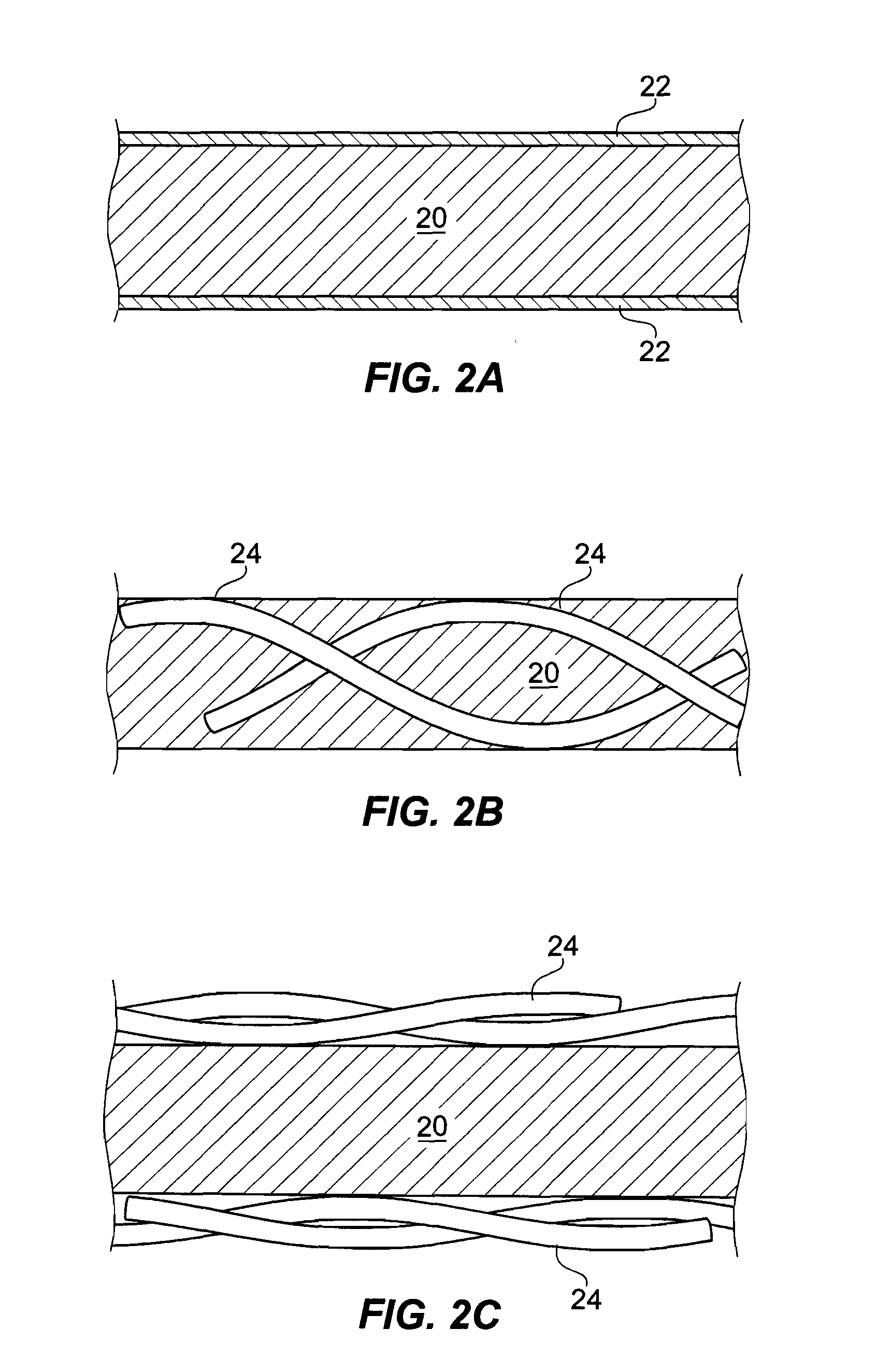Anti-Fomitic Device Incorporating Anti-Microbial Metals
a technology of antimicrobial metals and antifungal devices, which is applied in the field of antifungal devices incorporating antimicrobial metals, can solve the problems of inability to withstand abrasion, and difficulty in absorbing abrasion, so as to avoid irritation or contact dermatitis, easy and quick application, and easy sealing or attaching
- Summary
- Abstract
- Description
- Claims
- Application Information
AI Technical Summary
Benefits of technology
Problems solved by technology
Method used
Image
Examples
Embodiment Construction
[0025]Disclosed embodiments relate generally to a cover or barrier to prevent cross-infection. In particular, the embodiments relate to a range of anti-microbial anti-fomitic covers to both prevent cross-infection and disinfect surfaces, including such covers for pillows, mattresses, surgical and diagnostic equipment, toilet seats, table and chair seat surfaces, wash basin faucet handles and other handles, etc., as well as covers such as diapers or other similar sorts of “clothing,” for example, surgical robes, shoe covers for the surgical room, etc.
[0026]The embodiments disclosed achieve a variety of results and applications. As used herein, the term anti-microbial refers to the properties of being anti-bacterial, anti-fungal, and anti-viral.
[0027]In the following detailed descriptions, a flat object to be covered will be designated generally as A, and the cover therefor will be designated generally as B. In general, however, object A need not be flat. While illustrated as flat and...
PUM
 Login to View More
Login to View More Abstract
Description
Claims
Application Information
 Login to View More
Login to View More - R&D
- Intellectual Property
- Life Sciences
- Materials
- Tech Scout
- Unparalleled Data Quality
- Higher Quality Content
- 60% Fewer Hallucinations
Browse by: Latest US Patents, China's latest patents, Technical Efficacy Thesaurus, Application Domain, Technology Topic, Popular Technical Reports.
© 2025 PatSnap. All rights reserved.Legal|Privacy policy|Modern Slavery Act Transparency Statement|Sitemap|About US| Contact US: help@patsnap.com



